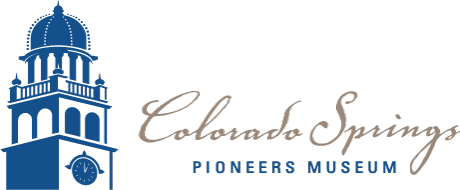Julie Villiers Lewis McMillan Penrose was an extraordinary woman from a storied family. Born in 1870, Julie was the daughter of prominent businessman and former Detroit Mayor Alexander Lewis and his wife Elizabeth Ingersoll. Lewis was the grandson of Frenchman Louis Villiers and grew up in Ontario, Canada before arriving in Detroit at the age of 15. Dubbed the “First Gentleman of Detroit,” Lewis was an ideal civic leader in his adopted city, serving as police commissioner and helping found the Detroit Museum of Art and the city’s public library.
Julie was one of eight Lewis children to survive to adulthood. Her family was wealthy, well-travelled and fluent in all things French. The “belle” of Detroit society, Julie was said to be exceptionally beautiful. After attending finishing school in Boston, seventeen-year-old Julie made her first grand tour of Europe. When she returned to America, she married James (Jim) Howard McMillan, the son of powerful U.S. Senator James McMillan. The couple had two children together; daughter Gladys was born in 1892, and son James II (Jimmy) was born in 1894.
Jim McMillan contracted tuberculosis while serving in the Spanish American War. The family moved to Colorado Springs for Jim’s health and purchased a beautiful home at 30 West Dale Street. Unbelievably, Julie Lewis McMillan suffered two devastating losses just weeks apart. On April 3, 1902, her son Jimmy died from a ruptured appendix and on May 9, 1902, her husband died of tuberculosis. She accompanied the coffins of her husband and son back to Detroit by private railroad car.
After a few years of mourning, she slowly began to reemerge into Colorado Springs society. She initially met Spencer Penrose at a Cheyenne Mountain Country Club clambake. The confirmed bachelor and notorious carouser Spencer and the refined Julie began spending time together. In a remarkable coincidence nearly impossible to believe, Julie and Spencer “ran into each other” aboard a ship bound for Europe.
When the ship docked, Spencer accompanied Julie to Nice, France. After awaiting his own father’s written permission to marry, Spencer threw Dr. Penrose’s letter of consent into Julie’s lap while she sunbathed on the French Riviera. The awkward move served as a proposal and the two were married on April 26, 1906 at St. George’s Church in London.
Following an extensive tour of Europe, the pair returned to Julie’s home on West Dale in Colorado Springs. In January 1916, they purchased El Pomar Estate in the Broadmoor from Mrs. Grace Goodyear Potter. Spencer also purchased several ranches south of Colorado Springs and consolidated them int the over 2,000 acre country retreat known as Turkey Creek Ranch.
Submitted by Leah Davis Witherow, CSPM Curator of History










